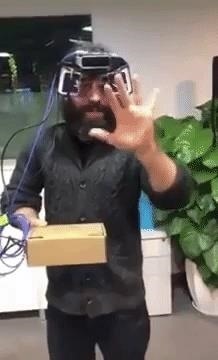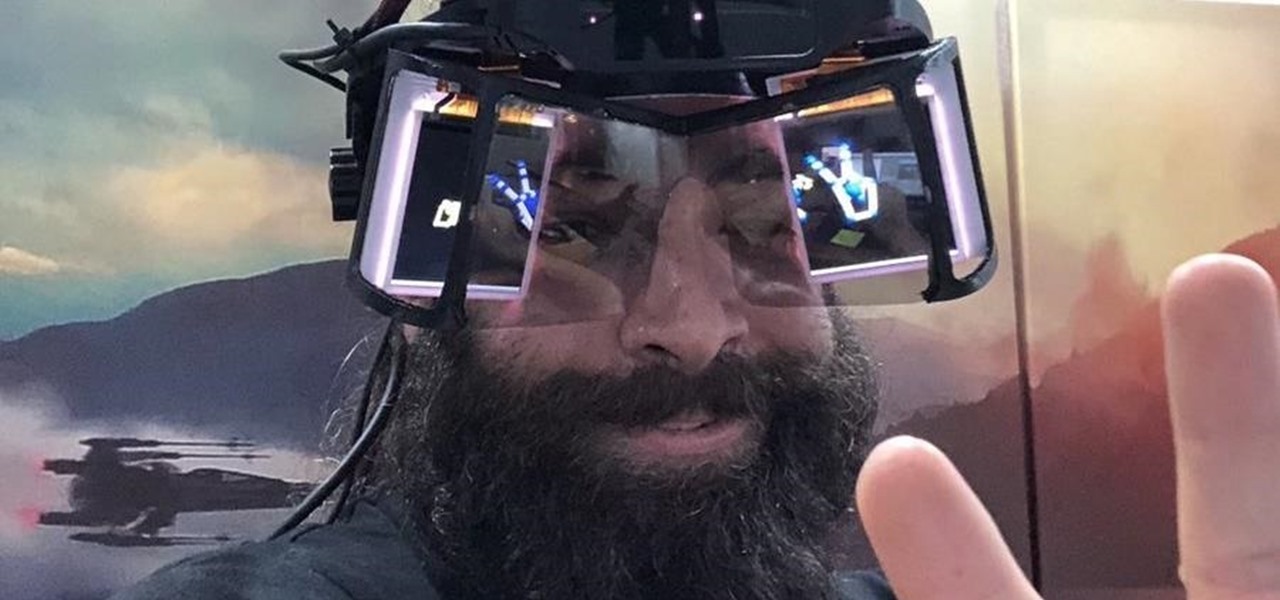While Leap Motion has given makers a DIY solution for building their own augmented reality headset with Project North Star, a self-described "AR wonk" has taken the blueprints one step further by creating an untethered version.
Noah Zerkin, a research and development project manager at industrial design shop NOA Labs in Shenzhen, China, recently shared the "mobile" computer, a Windows 10 motherboard with a battery pack in a cardboard enclosure attached to a shoulder strap, on Twitter. The computer pushes AR content through Leap Motion's headset design, which offers a spatial computing interface and wide field of view via the company's motion controllers and a pair of reflective LCD displays.


So far, Zerkin has run a sample scene via Unity on the makeshift computer pack, but he's also looking to test Project North Star — along with Occipital Structure Core for environmental mapping — for rendering more complex 3D content.
Suffice to say, the set-up probably won't pass any water or dust resistance standards. However, when quizzed on Twitter, Zerkin notes that it's unlikely to spontaneously combust, either.
- Don't Miss: Leap Motion's New Experimental Tools Give Developers Access to Camera Data & Unlock Multiple Device Support
"It's not like paper or cardboard just spontaneously burn if exposed to moderately high temperatures," said Zerkin via tweet. "It takes an open flame to do that. I solder on top of cardboard all the time. The CPU would overheat and shut down before the temp in the box got anywhere near that high."
The DIY project isn't Zerkin's first innovation related to Project North Star. It's not even his first achievement with the headset this week.


On Wednesday, he began shipping mass-produced lenses for the headset design. Zerkin contracted with EPPOSUN to produce the injection-molded lenses en masse. Sold for a $40 a pair, Zerkin's entrepreneurial spirit has lowered the bill of materials for a DIY Project North Star headset into the range of $100.
"The biggest stumbling block for those looking to build their own North Star headsets has been the fabrication of the reflective lenses," said Zerkin in a blog post. "People have been spending around $200 to have uncoated reflectors milled with a diamond tip from a big block of acrylic. They've been quoted prices up to $400 to have them coating with the half-reflective silver mirroring and the anti-reflective coating that prevents an unwanted secondary reflection from the lens' outer surface."
Zerkin's efforts underscore Project North Star's appeal to a cross section of AR enthusiasts and DIY tinkerers, particularly those who would rather not pay the higher price tag for a HoloLens, a Magic Leap One, or even a more modestly priced Meta 2.
Moreover, his latest project demonstrates that it still takes quite a bit of horsepower to bring complex 3D content into augmented reality. It is truly a feat of engineering that Microsoft and Magic Leap are able to squeeze so much computing power into comparably smaller packages. But, so far, the AR hardware industry is still a far cry away from shrinking the package down into something like a pair of Spectacles, which would appeal to consumers far beyond AR enthusiasts and enterprise customers.
Just updated your iPhone? You'll find new features for Podcasts, News, Books, and TV, as well as important security improvements and fresh wallpapers. Find out what's new and changed on your iPhone with the iOS 17.5 update.























Be the First to Comment
Share Your Thoughts